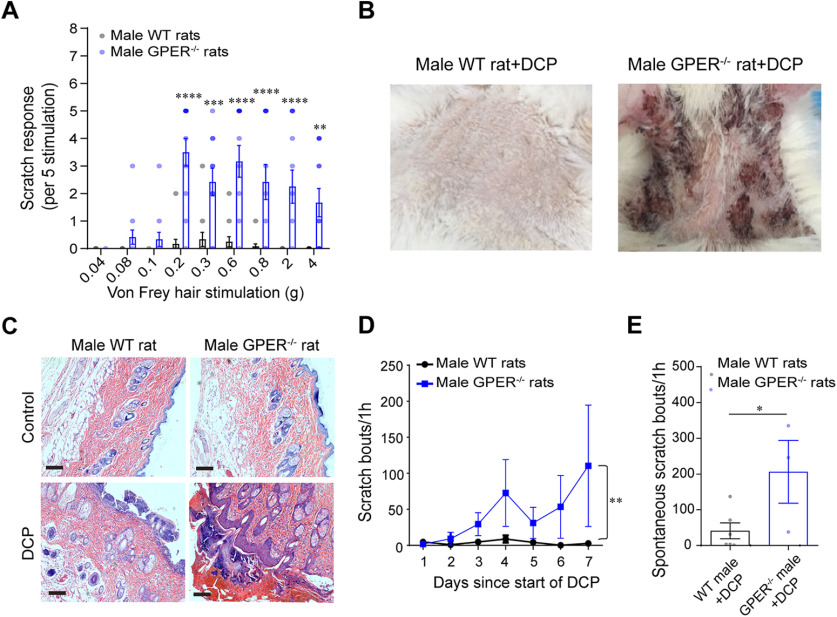Figure 9.
Male GPER−/− rats are hypersensitive to mechanical and chemical itch. A, Male GPER−/− rats responded to light mechanical probing of the back neck by hindpaw scratching more vigorously than their WT counterparts; n = 12 rats for each group; two-way ANOVA followed by Bonferroni's post hoc test. F(1,198) = 110.6; 0.2 g, 0.6 g, 0.8 g, and 2 g, p < 0.0001; 0.3 g, p = 0.0003; 4 g, p = 0.0066. B, Photograph of neck skin in DCP-treated male rats on day 8. C, HE-stained skin of naive and DCP-treated male WT and GPER−/− rats. Scale bar, 100 µm. D, Scratch bouts on every testing day of DCP-treated WT and GPER−/− male rats; n = 3–6 rats for each group; area under the curves (AUC) was compared using unpaired Student's t test. p = 0.0070, t = 3.773, df = 7. E, Spontaneous scratching behavior on day 8 of WT and GPER−/− male rats; n = 3–6 rats, unpaired Student's t test. p = 0.0409, t = 2.501, df = 7.

